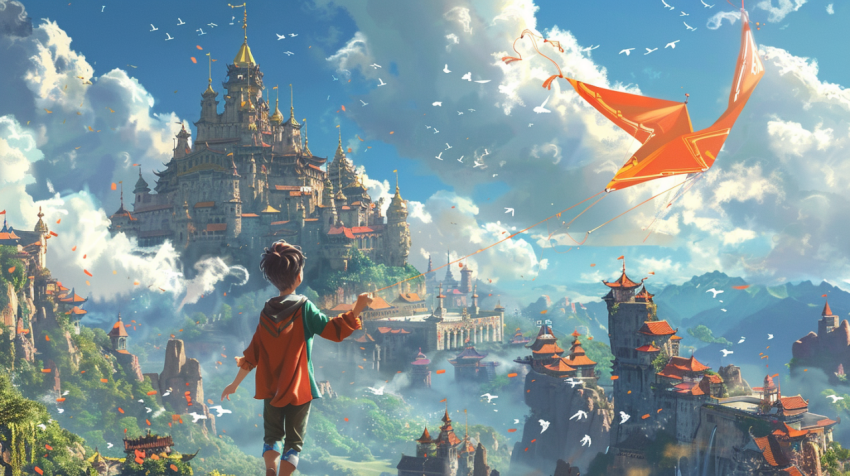











Makar Sankranti: Celebrating the Sun's Journey and the Bountiful Harvest
Makar Sankranti, a significant Hindu festival, marks the transition of the sun into the zodiac sign of Capricorn (Makar in Sanskrit) on its celestial path. This astronomical event typically occurs on January 14th or 15th each year. Makar Sankranti is unique among Hindu festivals as it follows the solar calendar rather than the lunar calendar. It's a joyous occasion celebrated throughout India and by the Indian diaspora worldwide, symbolizing the end of winter and the beginning of longer days. It is also a major harvest festival.
1. The Astronomical Significance of Makar Sankranti: Welcoming the Sun
- Makar Sankranti marks the day when the sun begins its northward journey, known as Uttarayan in Sanskrit.
- This transition is considered highly auspicious in Hinduism, symbolizing a period of new beginnings, positivity, and spiritual growth.
- The sun's entry into Capricorn is believed to bring an end to the inauspicious period and usher in a time of prosperity and abundance.
2. Makar Sankranti as a Harvest Festival: Giving Thanks for Abundance
- Makar Sankranti is primarily a harvest festival, celebrated with great fervor in agricultural communities across India.
- It's a time to give thanks for a bountiful harvest and to pray for continued prosperity in the coming year.
- Farmers offer the first grains of the new harvest to the gods as a gesture of gratitude.
- Makar Sankranti coincides with the harvest of winter crops like rice, sugarcane, and sesame.
3. Diverse Names, Diverse Celebrations: Regional Variations of Makar Sankranti
Makar Sankranti is known by different names and celebrated with unique traditions in various parts of India:
- Makar Sankranti: The most common name, used in many states including Maharashtra, Gujarat, Karnataka, Andhra Pradesh, Telangana, and parts of North India.
- Pongal: Celebrated in Tamil Nadu, Pongal is a four-day harvest festival dedicated to the Sun God. The main ritual involves boiling rice in milk and jaggery in a new pot until it overflows, symbolizing prosperity.
- Uttarayan: In Gujarat, Makar Sankranti is known as Uttarayan and is famous for its vibrant kite-flying festival. The skies are filled with colorful kites of all shapes and sizes.
- Magh Bihu/Bhogali Bihu: Celebrated in Assam, Magh Bihu marks the end of the harvesting season. Bonfires, feasting, and traditional games are part of the celebrations.
- Maghi: In Punjab, Makar Sankranti is celebrated as Maghi, a day after Lohri. People take a dip in holy rivers and enjoy festive meals.
- Khichdi: In Uttar Pradesh and Bihar, the festival is often referred to as Khichdi, named after a dish made of rice and lentils that is traditionally eaten on this day.
- Poush সংক্রান্তি (Poush Sankranti): In West Bengal, the festival is celebrated as Poush Sankranti.
4. Traditions and Rituals: Celebrating the Harvest and the Sun
Makar Sankranti celebrations involve a variety of traditions and rituals:
- Holy Dip: Taking a dip in holy rivers, especially the Ganges, Yamuna, Godavari, Krishna, and Cauvery, is considered highly auspicious on Makar Sankranti. It is believed to cleanse one of sins and bring good fortune.
- Sun Worship: Prayers and offerings are made to the Sun God, Surya, thanking him for his blessings and seeking his continued grace.
- Kite Flying: Kite flying is a popular tradition associated with Makar Sankranti, particularly in Gujarat, where it is a major event. It symbolizes the human soul reaching for the heavens.
- Til-Gul (Sesame and Jaggery): Sweets made of sesame seeds (til) and jaggery (gul) are exchanged among family and friends. In Maharashtra, people say "Tilgul घ्या, गोड गोड बोला!" (Tilgul ghya, god god bola) which translates to "Eat til and jaggery and speak sweet words." This symbolizes the importance of forgiveness and sweet speech.
- Bonfires: In some regions, bonfires are lit, and people gather around them to sing songs and offer prayers. This is mostly seen in North India during Lohri which is a day before Maghi.
- Charity and Donations: Giving to the less fortunate is an important aspect of Makar Sankranti. People often donate food, clothes, and money to the needy.
- Melas (Fairs): Many towns and villages host fairs on Makar Sankranti, featuring food stalls, games, and cultural performances.
- Cattle Worship: In rural areas, cattle, which are essential for agriculture, are decorated and worshipped on this day.
5. Makar Sankranti: A Time for Family and Community
Makar Sankranti is a time for families and communities to come together:
- People visit relatives and friends, exchange greetings, and share festive meals.
- The festival strengthens social bonds and promotes harmony.
- It's an occasion to forgive past grievances and start anew.
6. The Significance of Makar Sankranti in Modern Times
Beyond its religious and agricultural significance, Makar Sankranti holds relevance in modern times:
- It's a reminder of our connection to nature and the importance of the sun in sustaining life.
- It's an opportunity to celebrate the fruits of hard work and to express gratitude for abundance.
- It promotes values of sharing, charity, and community spirit.
Conclusion:
Makar Sankranti, with its diverse names and unique regional traditions, is a vibrant and joyous festival that celebrates the sun's northward journey, the bountiful harvest, and the spirit of new beginnings. It's a time for families and communities to come together, to give thanks for nature's blessings, and to look forward to a prosperous future. As the sun begins its ascent, Makar Sankranti reminds us of the cyclical nature of life, the importance of hard work, and the enduring power of hope and renewal. The festival's rich tapestry of traditions, from kite flying to the sharing of sesame sweets, makes it a truly special and meaningful occasion across India.
Makar Sankranti, Makar Sankranti 2023 (or relevant year), Uttarayan, Pongal, Magh Bihu, Maghi, Khichdi, Poush Parbon, Makar Sankranti history, Makar Sankranti significance, Makar Sankranti traditions, Makar Sankranti rituals, kite flying festival, Makar Sankranti food, Tilgul, sesame and jaggery, Makar Sankranti celebrations, Makar Sankranti in different states of India, when is Makar Sankranti, why is Makar Sankranti celebrated, harvest festival, Sun God, Surya, holy dip, Ganges, Yamuna, Godavari, Krishna, Cauvery, Makar Sankranti greetings, Happy Makar Sankranti.

